


The following tabs are available in the Texture Node Properties dialog box:
Set the node name for texture in [Node Name] tab.
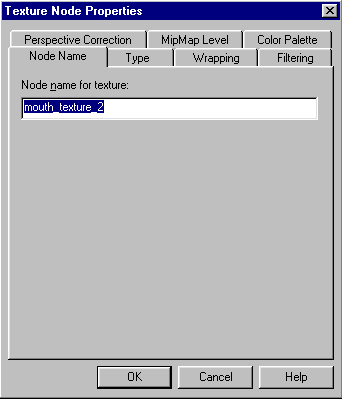
If the node is linked, the node name is displayed in the [Node name for texture] text box. If it is not linked, then "Unknown" is displayed here. To change the node name, edit the name that is displayed. To set a new name for a node that is not linked, delete "Unknown" and input the desired name.
Conversely, to delete the node name, delete the name that is displayed in the text box. Please note that ASCII characters from "!" (0x21) to "~" (0x7e) can be used for node names. In addition, node names cannot contain spaces, nor can they contain kanji, hiragana or katakana characters.
Use the [Type] tab to specify the texture format and bit size.

Under [Format], select the texture format from the following items:
Under [Bit size], select the bit size per pixel for the texture from the following items:
The bit size that can be selected will automatically change depending upon the item selected under [Format].
Use the [Wrapping] tab to specify texture wrapping.
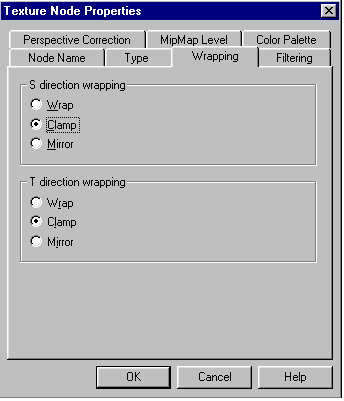
Set the texture wrapping for the S-direction and the T-direction. Select from among the following items for each specification:
Use the [Filtering] tab to specify texture filtering.

Choose one of the following types of texture filtering:
Use the [Perspective Correction] tab to specify whether perspective correction should be used on textures.
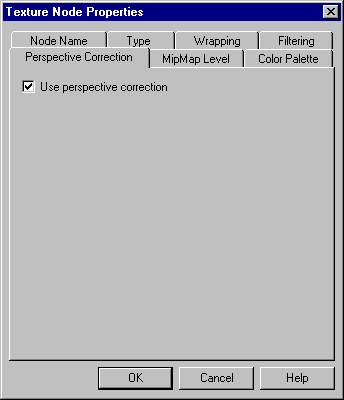
Select the "Use perspective correction" checkbox to use perspective correction.
Use the [MipMap Level] tab to check the number of MipMap texture levels.
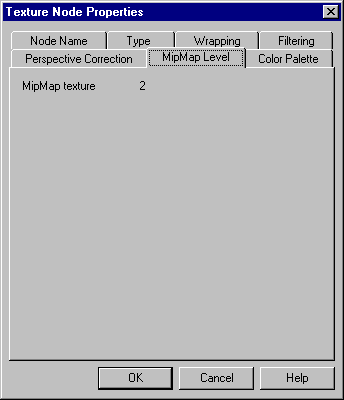
This field is read-only and cannot be changed.
Use the [Color Palette] tab to display the usage information of Index Texture Image added in NIFF2.0 and Color Palette.
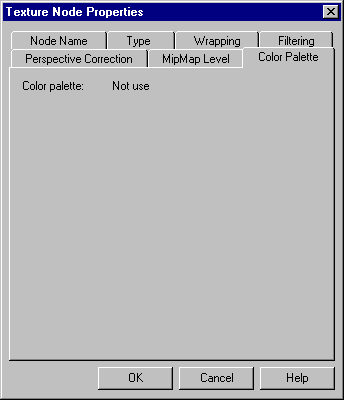
This field is read-only and cannot be changed.